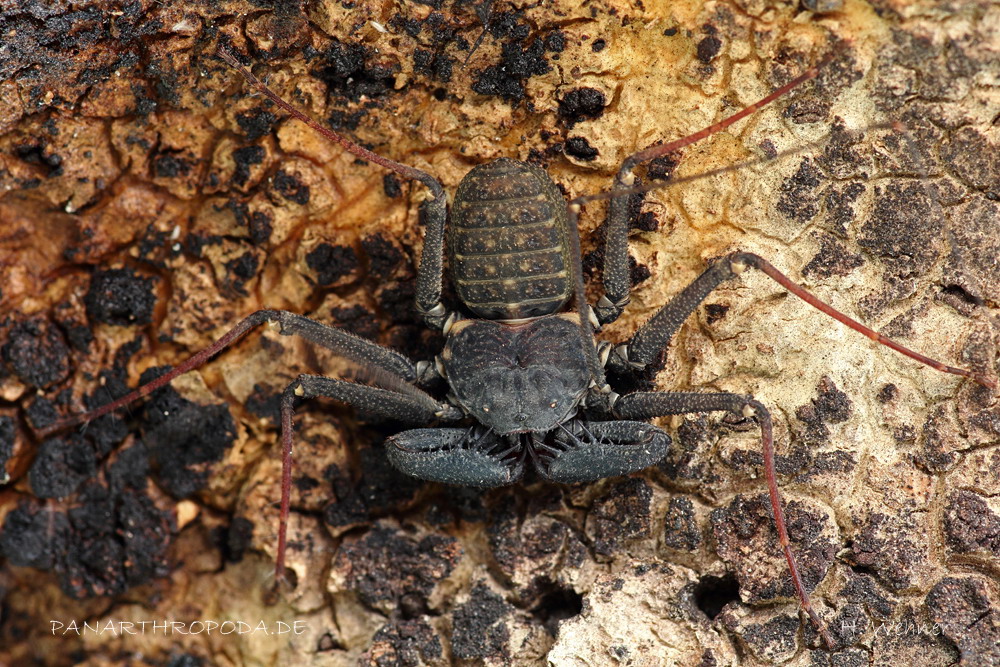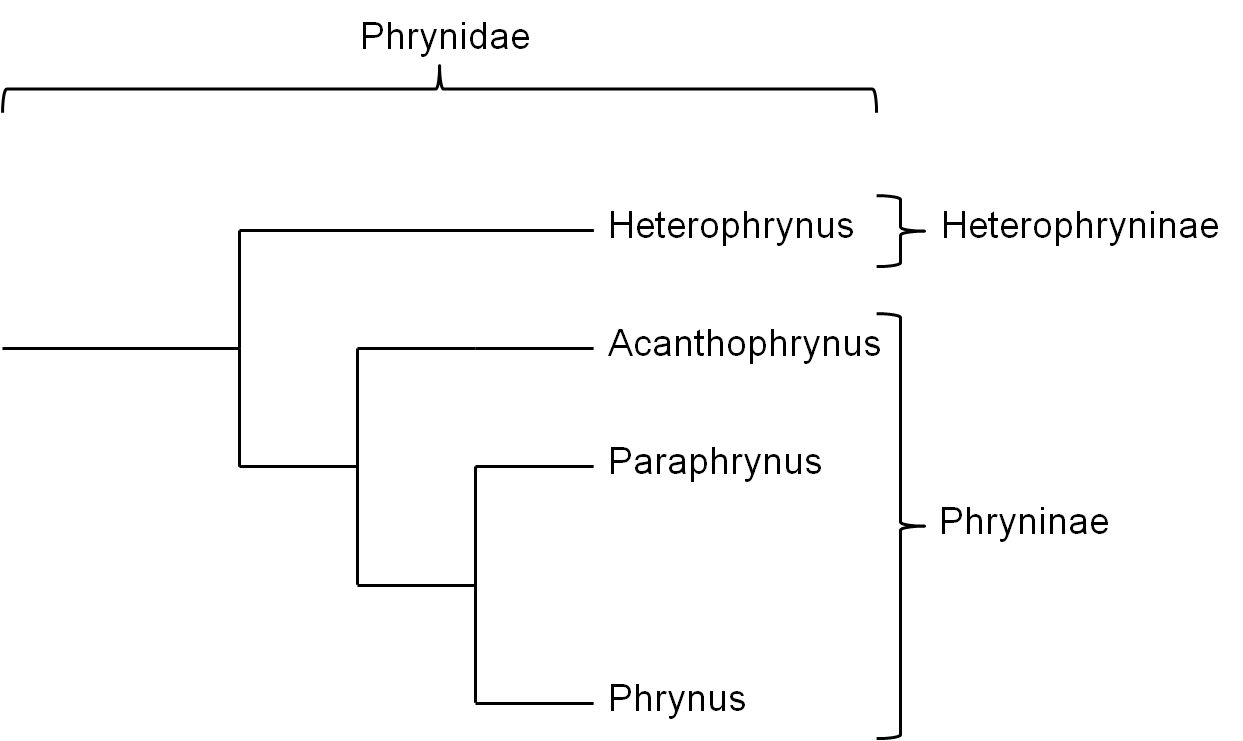
The family Phrynidae

Phrynus marginemaculatus male
Identification and anatomy
The family Phrynidae contains the biggest recent whip spider Acanthophrynus coronatus (45 mm body length). The genus Heterophrynus also contains species of great size with body lengths up to 30 mm. The genera Phrynus and Paraphyrnus comprise middle-sized to big species (13-35 mm; 15-30 mm) (Weygoldt, 2000).
The genus Heterophrynus exhibits the original number of three primary dorsal spines of the tibia of the pedipalps. This original condition has changed in the genera Phrynus and Paraphrynus where the number of primary dorsal spines of the tibia of the pedipalp increased to 5 respectively 6 (Weygoldt, 2000).
Yet missing picture
Belonging to the Apulvillata the Phrynidae lack pulvilli on the walking leg tarsi and the inner respectively the medial denticle row of the basal articular of the chelicerae consists of three denticles (Weygoldt, 2000).
Yet missing picture
The Phrynidae can be distinguished from the Phrynichidae which are also belonging to the Apulvillata by the reduction of the two medial prosomal sternites to tubercle-like structures (Figure 1)(Weygoldt, 2000).

Figure 1: Prosomal sternites of a representative of the Phrynidae and a representative of the Phrynichidae. A) Phrynus goesii (Phrynidae), B) Damon diadema (Phrynichidae). The red numbers indicate the prosomal sternites. In the Phrynidae (and the remaining amblypygid families except the family Phrynichidae) the two median prosomal sternites (2, 3) are reduced to tubercle-like structures (A). In the Phrynichidae the two median prosomal sternites (2, 3) are broadened and cover a major part of the ventral coxal area (B). Scale bar 2 mm
A synapormorphy of the Phrynidae is the evolution of claw-like dark and hard sclerites from the appendage vestiges of the female gonopods. These are necessary for pushing down arm-like extensions of the spermatophore which leads to an exposition of the sperm-packages and an uptake of the sperm in the respective seminal receptacle (Weygoldt, 2000).
Yet missing picture
Distribution
Except Phrynus exsul, which occurs at the Indonesian Sunda-Islands Rinca and Flores (Rahmadi & Harvey, 2007), the distribution of the family Phrynidae is restricted to the Neotropics (Weygoldt, 2000). The subfamily Heterophryninae with the only genus Heterophrynus undergone its adaptive radiation in northern South America (Weygoldt, 2000).
The Phryninae show a mesoamerican distribution. Acanthophrynus occurs in Mexico (Weygoldt, 2000). The genera Phrynus and Paraphrynus have a distribution that ranges from Florida and Arizona in the north to northern Brazil and the Caribbean Islands in the south (Quintero, 1981).
Inner systematics
The family Phrynidae consists of the genera Acanthophrynus, Phrynus, Paraphrynus and Heterophrynus. The family Phrynidae is divided in two subfamilies: i) Heterophryninae which is a monogeneric family and comprises the only genus Heterophrynus and ii) Phryninae which comprises the genera Acanthophrynus, Phrynus and Paraphrynus (Figure 2) (Weygoldt, 2000).
The genus Acanthophrynus is a monotypic genus (Weygoldt, 2000).

Figure 2: Relationships between the different genera of the Phrynidae.
References
Quintero, D. J. (1981). The amblypygid genus Phrynus in the Americas (Amblypygi, Phrynidae). Journal of Arachnology, 9, 117-166.
Rahmadi, C., & Harvey, M. S. (2007). The Female of Phrynus Exsul (Amblypygi, Phrynidae) From Indonesia. Journal of Arachnology, 35, 137-142.
Weygoldt, P. (2000). Whips Spiders (Chelicerata: Amblypygi). Their Biology, Morphology and Systematics. Apollo Books, Stenstrup, DK.
F. Schramm, authored 2011